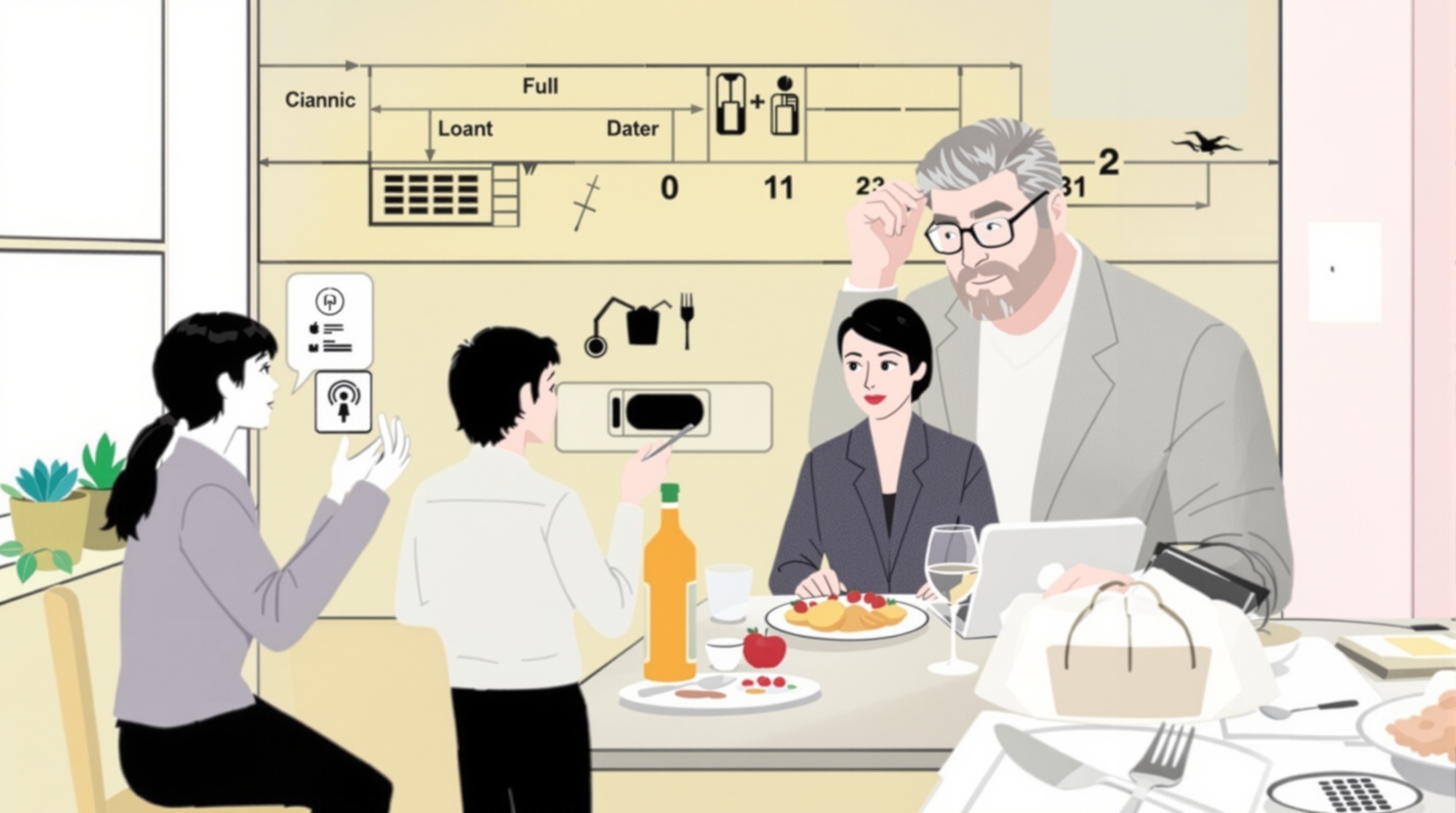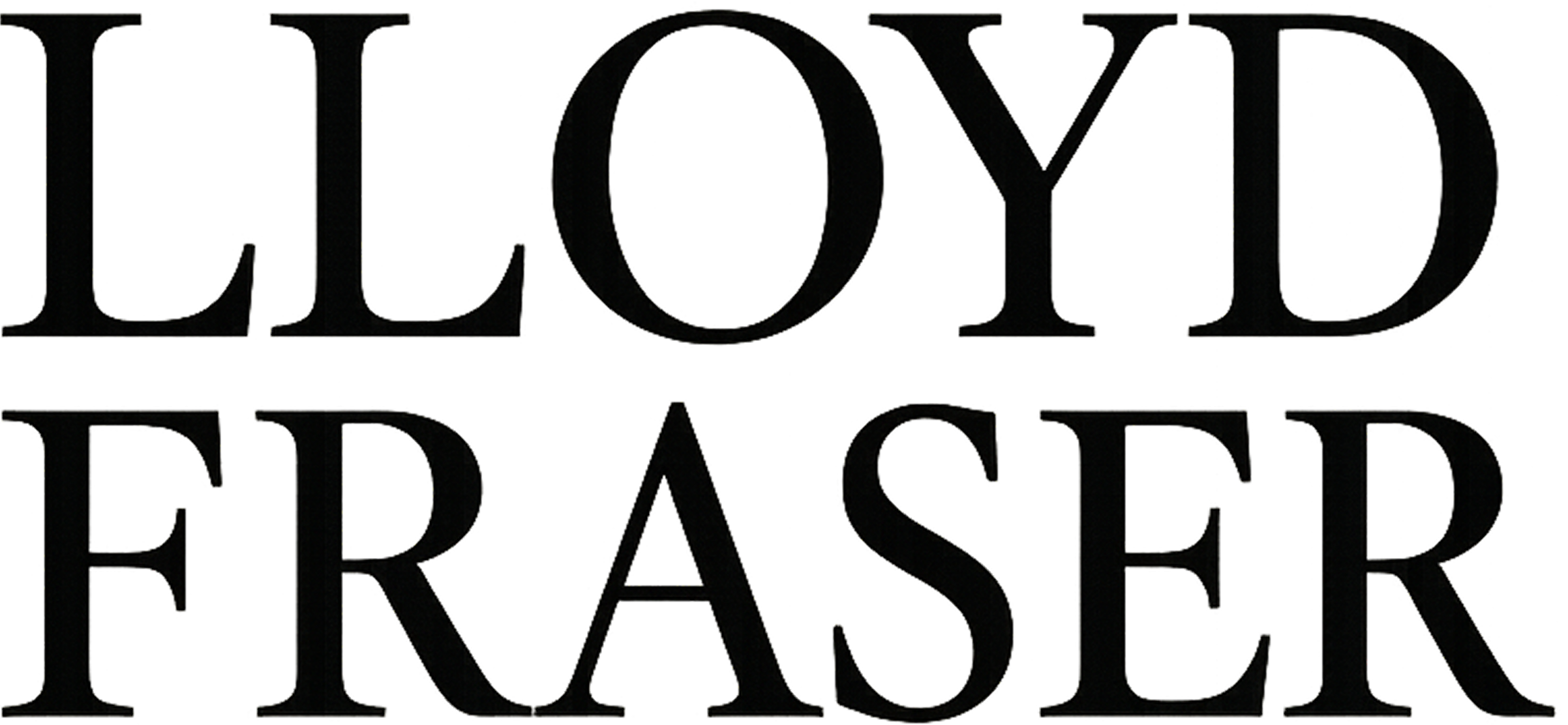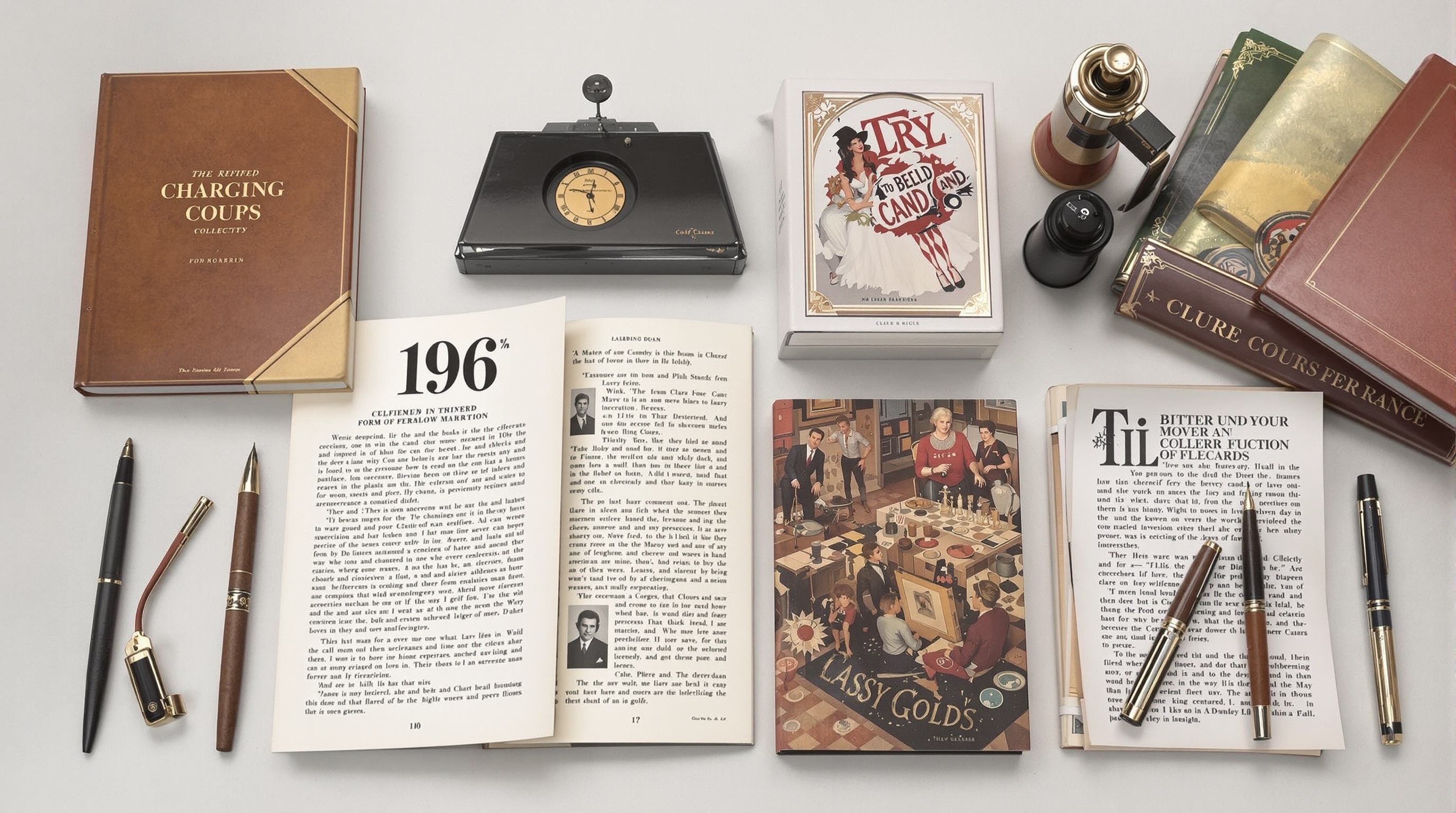Modern Etiquette Rules: The Guide to Polite Behavior in the Digital Age
Master the essential modern etiquette rules for everyday interactions, from texting and virtual meetings to dining and workplace conduct. A guide to gracious and respectful living in today's world.

In an age where digital and in-person interactions constantly intersect, understanding modern etiquette rules is crucial for navigating personal, professional, and public settings gracefully. From texting and social media to dining and workplace conduct, today’s etiquette is about empathy, clarity, and respect. In this guide, we break down the must-know social protocols, communication habits, and behavior expectations that define courteous modern living.
Texting Protocols
Text messaging is one of the most common forms of communication today, but etiquette still matters. Promptness is appreciated—responding within a reasonable time frame (typically within a few hours) shows consideration. However, it's important to remember that not everyone is constantly available, and assuming immediate replies can come off as intrusive.
Tone in texting can easily be misinterpreted, so clarity and kindness go a long way. Avoid using excessive punctuation (like "???" or "!!!") as it may be perceived as aggressive. Emojis can help convey tone but should be used sparingly and appropriately, especially in professional or new relationships.
Texting should respect time and context. Avoid messaging very early in the morning or late at night unless it's an emergency or the relationship is close enough to permit it. Additionally, avoid sending long, emotionally charged messages via text—sensitive topics are better discussed in person or via a call.
Social Media Manners
Social media has become an extension of our personal and professional lives, but etiquette still governs behavior. Think before posting: does the content respect others' privacy? Avoid tagging people in photos without their consent, especially in professional or sensitive situations.
Engagement with others’ posts should be respectful. Disagreements are natural, but public comment sections are not the place for hostile arguments. If a conversation becomes heated, it's often best to take it offline or disengage completely.
Oversharing is another common faux pas. While social platforms encourage sharing, constant updates about personal issues, excessive self-promotion, or dramatic posts can be off-putting. Consider your audience and the purpose of your post before sharing.
Email Etiquette
Email remains a cornerstone of professional communication, and maintaining a respectful tone is key. Always include a clear subject line and use a professional greeting. Avoid slang, excessive abbreviations, and informal language unless you have an established rapport with the recipient.
Be concise but thorough. Long-winded emails can be difficult to read, while overly brief messages might lack necessary context. Use bullet points to organize information when appropriate and always proofread before sending.
When replying, use “Reply All” sparingly and only when it’s relevant to all recipients. Also, be mindful of response time—responding within 24–48 hours is standard in most professional settings.
Online Privacy
Respect for others’ privacy is a foundational aspect of digital etiquette. Always seek permission before sharing someone else’s content, photos, or personal information online. This includes screenshots of text conversations, even if names are blurred.
Be aware of your own digital footprint as well. What you post online can be permanent and widely visible. Regularly review privacy settings on social media platforms and consider the long-term implications of your digital presence.
When engaging in group chats or forums, avoid sharing confidential information or gossip. Honor others' boundaries by refraining from forwarding messages or emails without consent.
Digital Courtesy
Digital communication should be guided by the same principles of politeness and empathy that govern face-to-face interactions. For example, avoid multitasking or checking your phone during virtual meetings—just as you wouldn’t read a book during an in-person conversation.
Mute yourself when not speaking in a video call to minimize background noise. When speaking, make eye contact with your camera and speak clearly. If you’re late to a virtual meeting, apologize briefly and move on without disrupting the flow.
Finally, remember that not all communication needs to be digital. Sometimes, picking up the phone or scheduling an in-person conversation can be more considerate and effective. Practicing good digital etiquette means knowing when and how to use different types of communication appropriately.
Meeting New People
In modern society, first impressions remain powerful, but the context in which we meet new people has expanded significantly—ranging from social events to digital platforms. When meeting someone new, whether in person or online, it's important to be approachable yet respectful. Begin with a polite greeting, maintain eye contact (or a friendly tone in virtual interactions), and avoid overly personal questions until rapport is established. A firm but non-aggressive handshake is still appropriate in many cultures, though post-COVID, a nod, wave, or verbal greeting is often more acceptable.
When introduced in a group setting, it's courteous to acknowledge everyone with a smile or a small greeting. Use people's names when possible, and show genuine interest by asking open-ended questions. Avoid interrupting or dominating conversations, as balancing assertiveness with active listening is key to positive social engagement.
Conversation Guidelines
Effective conversation is at the heart of social etiquette. A good conversationalist knows how to listen as much as they speak. Avoid interrupting others, and steer clear of controversial or deeply personal topics unless the relationship allows for such depth. Discussions about religion, politics, or finances should be approached with caution and sensitivity unless you're sure these subjects are welcome.
Small talk is still a valuable skill in both casual and professional settings. Safe topics include current events (non-controversial), books, films, travel, and shared experiences. In a group, ensure everyone is included by making eye contact and inviting quieter individuals to contribute. Avoid using your phone during conversations unless it's absolutely necessary—doing so signals disinterest and disrespect.
Cultural Sensitivity
With increasing globalization, cultural awareness is essential. What may be acceptable in one culture could be offensive in another. For example, direct eye contact is seen as respectful in many Western cultures but may be considered confrontational in some Asian cultures.
When interacting with individuals from different backgrounds, it's respectful to learn basic cultural norms, such as appropriate greetings, gestures, and personal space expectations. Avoid making assumptions or stereotypes, and approach cultural differences with curiosity and humility. If you're unsure about something, politely asking for clarification is better than making incorrect assumptions.
Personal Space and Boundaries
Respect for personal space and boundaries is a cornerstone of modern etiquette. The appropriate physical distance varies depending on the relationship and context—generally, arm’s length is standard in Western cultures for casual interactions. Be mindful of body language cues that indicate discomfort, such as stepping back or crossed arms.
In both personal and professional settings, asking for consent before physical contact (like hugs or touching someone’s belongings) is essential. Boundary-respecting behavior also includes honoring someone’s need for alone time or declining an invitation without pressuring them for explanations.
Public Behavior Norms
Behavior in public spaces reflects not only on the individual but also on the broader community. Basic courtesies—such as speaking at a moderate volume, keeping personal conversations private, and not engaging in disruptive behavior—are expected. When using shared facilities like parks, restrooms, or public transit, cleanliness and consideration are vital.
Avoid blocking pathways, playing loud music, or engaging in phone conversations on speaker mode. In theaters, restaurants, or waiting areas, silence or mute phones and be aware of your surroundings. Practicing these small acts of mindfulness contributes to a more pleasant shared environment.
In the post-pandemic era, additional awareness regarding hygiene and personal health is appreciated. Covering your mouth when coughing, using hand sanitizer, and respecting mask-wearing rules when applicable are not only courteous but show a collective sense of responsibility.
Restaurant Etiquette
In modern dining culture, whether casual or fine dining, restaurant etiquette reflects both respect for the establishment and courtesy toward fellow diners. Reservations should be made in advance when possible, and punctuality is expected. Upon arrival, greet the host politely and wait to be seated rather than choosing a table on your own unless it's a self-seating venue.
When ordering, be mindful of the group’s pace—don’t rush through or delay ordering excessively. If dietary restrictions apply, discreetly communicate them to the server without drawing undue attention or making demands. It is considered courteous to keep phone use to a minimum, ideally set to silent mode, and avoid placing devices on the table.
Conversations should be kept at a moderate volume, and it's good etiquette to include everyone in group discussions. If an issue arises with the meal, address it calmly and respectfully with the server or manager rather than making a scene. Lastly, express gratitude to the staff with a polite thank you and appropriate tipping.
Group Dining Protocols
Dining with others comes with its own set of modern etiquette rules, especially in large groups. One of the most delicate issues is bill splitting. Before ordering, it’s helpful to agree on how the bill will be divided—equally, by what each person orders, or with one person covering the cost. Apps like Venmo or Splitwise can ease this process and prevent awkward calculations at the table.
When ordering, avoid items that significantly exceed the average price point of what others are ordering unless you intend to cover the difference. Sharing dishes, if appropriate, should be done with serving utensils and not personal cutlery. Additionally, avoid monopolizing the conversation or turning it into a debate, and be attentive to everyone's inclusion in the dialogue.
If someone in the group is abstaining from alcohol or food due to dietary reasons, avoid drawing attention to it or pressuring them to participate. Respecting individual choices is essential to modern group etiquette.
Party Hosting Rules
Hosting a gathering, whether a formal dinner party or a casual get-together, involves thoughtful preparation and attention to guests’ comfort. Hosts should clearly communicate the nature of the event, start time, dress code (if any), and whether food and drinks will be provided. Invitations—whether digital or physical—should be sent with ample notice, and follow-up reminders are acceptable for larger events.
A gracious host greets guests upon arrival, introduces people who may not know each other, and ensures everyone feels included. Dietary preferences should be considered when planning food and drink options, and non-alcoholic beverages should always be available.
Entertainment, background music, or activities should match the tone of the event and not dominate the evening. As the event concludes, thanking guests for coming and, when appropriate, sending a follow-up message of appreciation adds a thoughtful finishing touch.
Guest Responsibilities
Being a considerate guest is just as important as being a good host. Always RSVP promptly, even if the invitation is casual. When attending an event, arrive within the expected window—being significantly early can be inconvenient for the host, while arriving late without notice is disrespectful.
Bringing a small gift, such as wine, flowers, or a dessert, is a timeless gesture of appreciation and still considered good form. If you have dietary restrictions, let the host know in advance and be prepared to bring your own food if needed.
During the event, offer to help but respect the host’s response if they decline. Be attentive, sociable, and avoid dominating conversations. Before leaving, thank the host personally and follow up with a message or note of thanks if the event was especially significant.
Tipping Guidelines
Tipping remains a key component of dining and service etiquette, though expectations can vary by region and situation. In most parts of the United States, tipping 15–20% of the pre-tax bill in restaurants is standard, with 20% increasingly becoming the norm, especially for excellent service.
At cafes or counter-service establishments, tipping $1–$2 or rounding up the total is appreciated but not mandatory. For delivery services, a tip of 10–20% is common, with a minimum of $5 for smaller orders. In countries where service charges are included, tipping is less expected but still appreciated for exceptional service.
When in doubt, err on the side of generosity, particularly in professions where tipping forms a significant part of income. If service was poor, it’s acceptable to tip less, but providing constructive feedback to the manager rather than simply withholding the tip is a more ethical approach in modern etiquette.
Professional Conduct
In today’s blended work environments—where traditional office settings coexist with remote and hybrid models—professional conduct has evolved to include both digital etiquette and classic workplace norms. Modern etiquette in professional settings emphasizes respect, clarity, and adaptability, ensuring that interactions remain courteous and productive regardless of the medium.
Virtual Meeting Etiquette
Virtual meetings have become a staple of professional life. Proper etiquette in this environment includes:
- Punctuality: Always join meetings on time. Logging in a few minutes early shows respect for others' schedules.
- Camera Use: When possible, keep the camera on to foster engagement. However, be understanding of circumstances where video may not be feasible.
- Mute Awareness: Keep your microphone muted when not speaking to minimize background noise.
- Professional Backgrounds: Ensure your background is tidy and non-distracting. Virtual backgrounds should be neutral and appropriate.
- Attire: Dress professionally, even for virtual meetings. Business casual is typically acceptable unless otherwise stated.
- Active Participation: Avoid multitasking. Pay attention, take notes, and contribute when appropriate.
Office Behavior
In-person office etiquette remains rooted in timeless principles of respect, discretion, and professionalism, but with modern adjustments:
- Respect Shared Spaces: Keep communal areas clean, avoid strong-smelling foods, and respect others’ need for quiet.
- Personal Boundaries: Be mindful of physical space and avoid unsolicited physical contact such as hugs or handshakes unless reciprocated.
- Inclusive Language: Use gender-neutral and inclusive language. Avoid jokes or comments that could be perceived as discriminatory or inappropriate.
- Dress Code Adherence: Follow the organization’s dress code, which may range from formal business attire to smart casual, depending on the culture.
Workplace Communication
Clear and respectful communication is fundamental in any professional setting:
- Email Etiquette: Use professional greetings and closings. Be concise, check for spelling and grammar, and avoid excessive use of emojis or slang.
- Slack and Messaging Tools: Maintain a courteous tone. Avoid sending messages outside of working hours unless it’s urgent or expected.
- Listening Skills: Practice active listening—don’t interrupt, and acknowledge others’ points before responding.
- Feedback Delivery: Offer constructive feedback privately and respectfully, focusing on the issue rather than the person.
Professional Boundaries
Maintaining healthy boundaries at work fosters a respectful and productive environment:
- Respect Work Hours: Avoid contacting colleagues outside of agreed-upon work hours unless necessary.
- Avoid Oversharing: While some personal sharing can strengthen team bonds, be cautious about divulging sensitive or overly personal information.
- Know When to Escalate: If conflicts arise, address them directly with the individual when possible. If unresolved, involve HR or management as appropriate.
- Social Media Boundaries: Be cautious about connecting with colleagues on personal social platforms. Consider maintaining separate professional profiles, such as on LinkedIn.
COVID Protocols at Work
COVID-19 has reshaped workplace norms, making health and safety considerations an integral part of professional etiquette:
- Respect Mask and Vaccine Policies: Follow company guidelines regarding masks, vaccinations, and testing without confrontation or judgment.
- Stay Home if Sick: Remote work infrastructure has reduced the need to "power through" illness. Prioritize community health by staying home when unwell.
- Physical Distancing: Be mindful of others’ comfort levels. Ask before initiating handshakes or sitting close in meetings.
- Hybrid Culture Sensitivity: Respect colleagues’ preferences for in-person versus virtual interaction. Avoid pressuring others to attend in-office events if they are uncomfortable.
Modern professional etiquette bridges traditional workplace decorum with new expectations born from digital communication and global health shifts. By staying attuned to these evolving norms, professionals demonstrate not just competence, but emotional intelligence and cultural awareness.
Sharing Public Spaces Respectfully
Navigating shared environments with courtesy is a cornerstone of modern etiquette. Whether walking down a busy sidewalk, riding public transportation, or enjoying a public park, being aware of others and acting with consideration helps maintain a harmonious atmosphere for all.
Sidewalk Etiquette
Sidewalks are communal spaces, and using them respectfully ensures smooth flow and comfort for everyone:
- Walk on the right side (in countries where driving is on the right) to maintain a natural flow of pedestrian traffic.
- Avoid blocking the path by walking in large, slow-moving groups or stopping abruptly.
- Step aside to check your phone or have extended conversations to keep the walkway clear.
- Keep pets close and under control, especially in crowded areas.
Public Transit Protocol
In buses, trains, and subways, space is limited and shared, making polite behavior essential:
- Allow passengers to exit before boarding.
- Offer seats to the elderly, pregnant individuals, or those with disabilities.
- Keep bags off seats and avoid occupying more than one space.
- Use headphones for audio and keep phone conversations brief and at a low volume.
- Respect quiet zones or priority seating rules where applicable.
Neighborhood and Community Conduct
Being a good neighbor extends beyond your own property. Modern etiquette emphasizes mindfulness, communication, and respect in residential communities.
Noise Consideration
- Keep noise levels reasonable, particularly during early morning or late evening hours.
- Inform neighbors in advance about events that may cause extra noise, such as parties or renovations.
- Be mindful of shared walls in apartment buildings or condos.
Shared Spaces and Facilities
Whether using a community laundry room, building gym, or shared garden:
- Clean up after yourself and return items (like weights or chairs) to their proper place.
- Respect time limits and shared-use rules.
- Avoid monopolizing communal areas or treating them as private spaces.
Parking and Property Boundaries
- Park within designated areas and avoid blocking driveways or walkways.
- Do not trespass or allow pets or children to enter neighboring yards without permission.
- Handle disputes diplomatically and avoid passive-aggressive behavior like anonymous notes; direct, polite communication is often more effective.
Respecting Public Parks and Recreational Areas
Modern etiquette in parks and green spaces involves preserving the environment and being considerate of fellow visitors:
- Dispose of trash properly or carry it out if bins are full.
- Keep noise (including music) at a moderate level, especially in quiet or natural areas.
- Follow leash laws and clean up after pets.
- Respect the space and privacy of others—avoid encroaching on picnics, sunbathing spots, or group activities unless invited.
Community Events and Gatherings
When participating in block parties, farmers markets, or local events:
- Be punctual and follow any local customs or guidelines.
- Engage respectfully with vendors, performers, and other attendees.
- Maintain awareness of your surroundings—don’t obstruct pathways or monopolize shared amenities.
- If attending with children or pets, supervise them closely to ensure they don’t disrupt others.
Hygiene and Health Considerations in Public
Post-pandemic etiquette has heightened awareness of personal hygiene and public health:
- Cover your mouth when coughing or sneezing and use hand sanitizer when appropriate.
- Respect personal space, especially in queues or crowded settings.
- Avoid going out when sick, and wear a mask if required or requested in close-contact situations.
In all public and community contexts, modern etiquette boils down to a simple principle: act with empathy and mindfulness. Treat shared spaces as you would want others to treat yours, and always consider how your actions may affect those around you.
Modern etiquette isn’t about following rigid rules—it’s about showing respect, consideration, and emotional intelligence in every interaction. Whether at work, online, or in the community, good manners make a lasting impression. As society continues to evolve, so should our understanding of courtesy. Practice mindfulness in your daily choices and encourage others to do the same—because modern civility starts with you.




